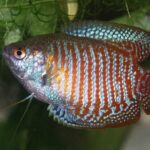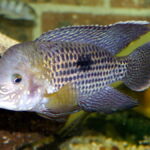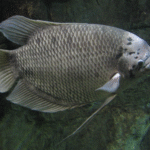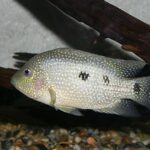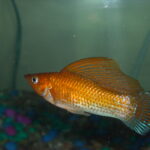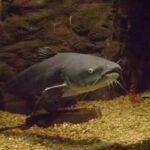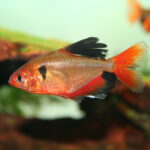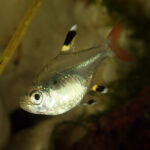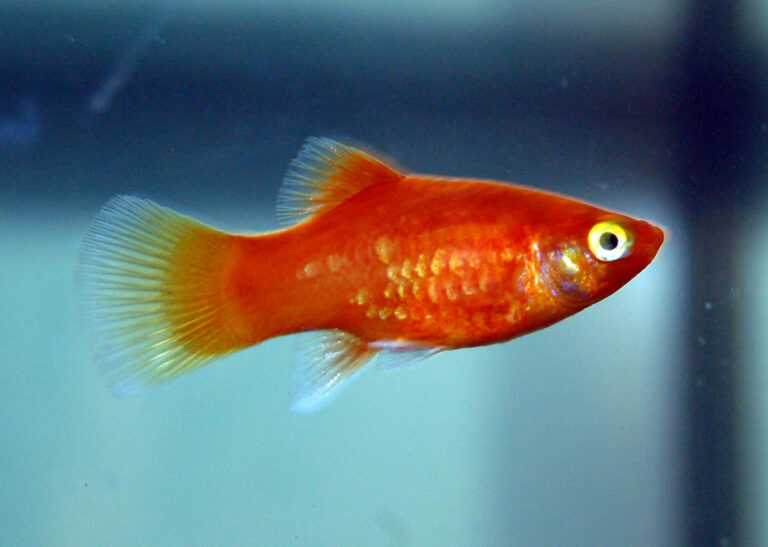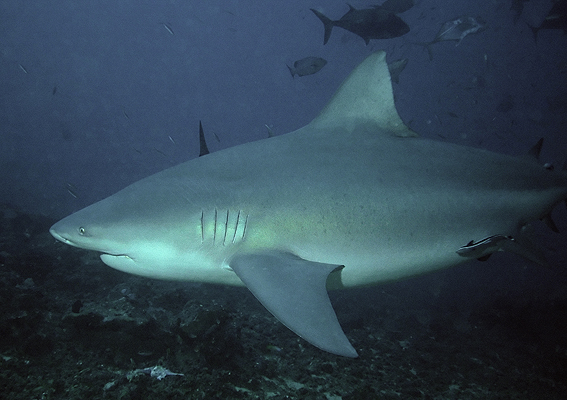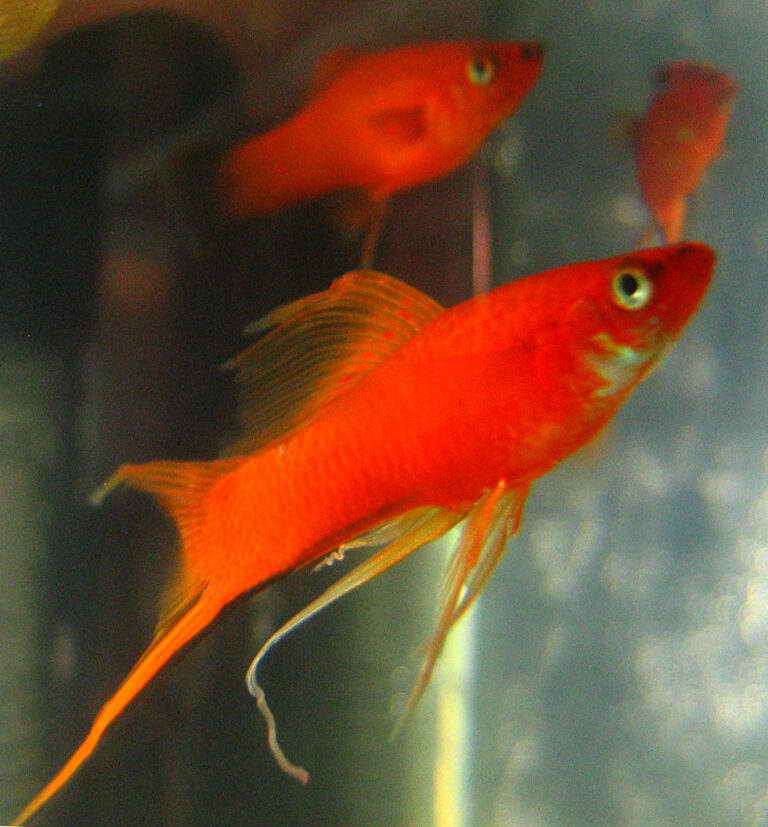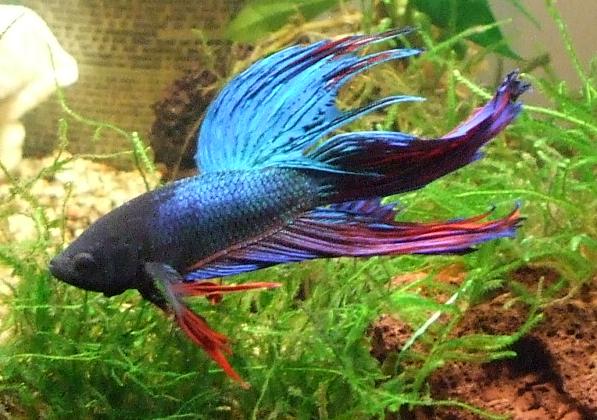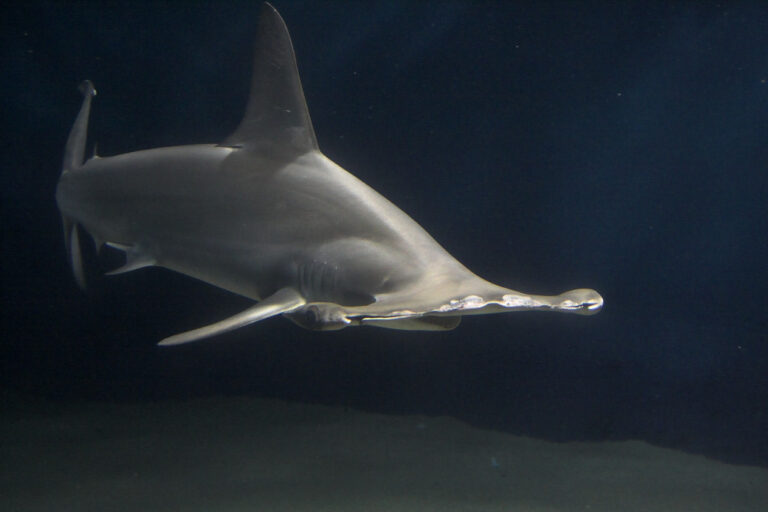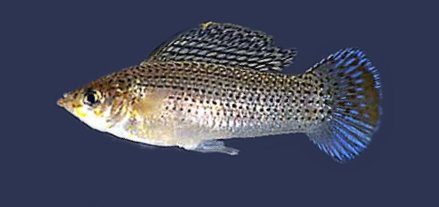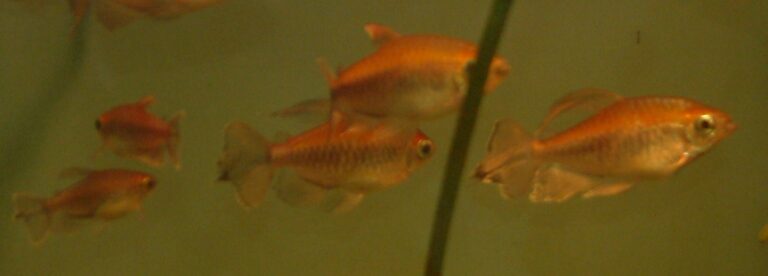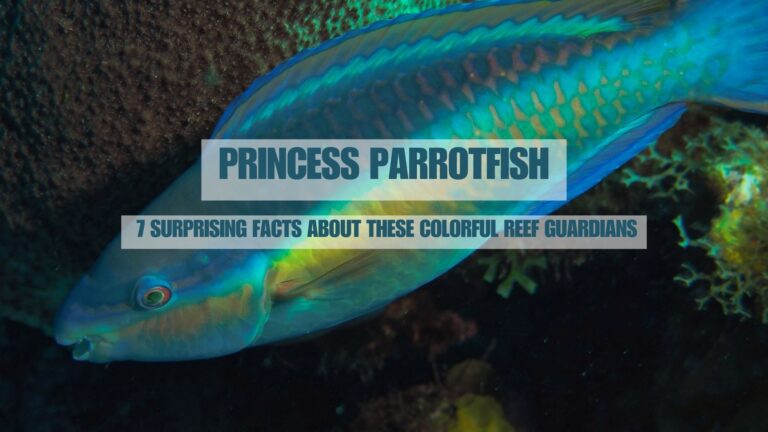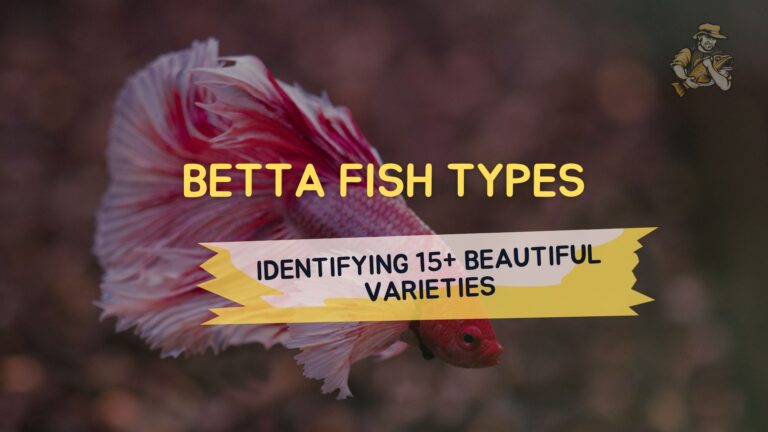Tuxedo Platy
By Ryan Maron | Last Modified: June 11, 2025
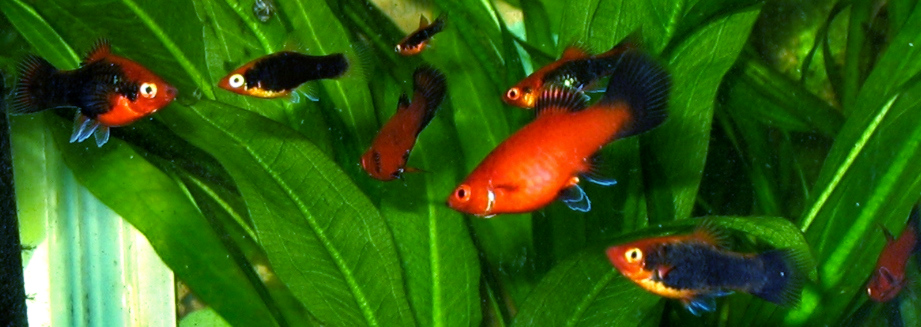
The Tuxedo Platy (Xiphophorus maculatus) stands as one of the most recognizable and beloved freshwater aquarium fish species, distinguished by its striking black and white coloration that resembles formal evening wear. This small livebearing fish belongs to the family Poeciliidae and represents a color variation of the common platy rather than a distinct species. Native to the coastal regions of eastern Mexico and northern Central America, the Tuxedo Platy has become a cornerstone species in the global aquarium trade due to its hardy nature, peaceful temperament, and remarkable breeding capabilities.
The ecological significance of Xiphophorus maculatus extends beyond its ornamental value. In natural freshwater ecosystems, these fish serve as important intermediate consumers, feeding on algae, small invertebrates, and organic detritus while providing sustenance for larger predatory species. Their role as prolific livebearers contributes significantly to nutrient cycling in shallow freshwater habitats, and their adaptability has made them valuable subjects for genetic research and environmental monitoring studies.
| Feature | Details |
|---|---|
| Common Name | Tuxedo Platy |
| Scientific Name | Xiphophorus maculatus |
| Family | Poeciliidae |
| Typical Size | 4-6 cm (1.5-2.5 inches), 2-4 grams |
| Habitat | Shallow freshwater streams and rivers |
| Diet | Omnivorous – algae, insects, plant matter |
| Distribution | Eastern Mexico, northern Central America |
| Conservation Status | Least Concern |
Taxonomy & Classification
The Tuxedo Platy belongs to the genus Xiphophorus within the family Poeciliidae, commonly known as livebearers. The genus name Xiphophorus derives from Greek words meaning “sword-bearer,” though this refers more accurately to the extended gonopodium in males rather than the sword-like tail extension seen in swordtails. The species designation maculatus translates to “spotted,” referencing the natural color patterns found in wild populations.
Within the taxonomic hierarchy, Xiphophorus maculatus represents one of approximately 28 recognized species in the genus Xiphophorus. The complete classification places this species in the order Cyprinodontiformes, which encompasses most small freshwater fish species with tooth-bearing jaws. Recent molecular studies have confirmed the close relationship between X. maculatus and X. hellerii (the common swordtail), with evidence suggesting occasional hybridization in overlapping natural habitats.
The Tuxedo Platy variation results from selective breeding programs that began in the early 20th century. Genetic research has identified specific alleles responsible for the distinctive black pigmentation pattern, particularly the dominant black gene that creates the characteristic dark body coloration contrasted against lighter fins and anterior regions. These breeding lines have maintained genetic stability across multiple generations, making the tuxedo pattern a reliable trait in commercial aquaculture operations.
Physical Description
The Tuxedo Platy exhibits a compact, laterally compressed body typical of the Poeciliidae family, with adult specimens reaching 4-6 centimeters in standard length. The distinguishing feature of this variety lies in its striking bicolored pattern, where the posterior two-thirds of the body displays deep black pigmentation while the anterior third, including the head and chest region, maintains lighter coloration ranging from bright orange to pale yellow or white.
Sexual dimorphism becomes apparent in mature specimens, with males developing a modified anal fin called a gonopodium used for internal fertilization. Male Tuxedo Platys typically measure 3-4 centimeters and display more vibrant coloration, particularly in the lighter anterior regions. Females grow larger at 4-6 centimeters and exhibit a fuller, more rounded body profile, especially when gravid. The anal fin in females remains fan-shaped and unmodified.
The species possesses a terminal mouth equipped with small, tricuspid teeth adapted for scraping algae and processing small organic particles. Their eyes are proportionally large relative to body size, featuring excellent color vision that aids in foraging and mate selection. The dorsal fin contains 10-12 soft rays, while the caudal fin displays a rounded profile without the extended lower rays characteristic of swordtails. Various platy fish color variations have been developed through selective breeding, but the tuxedo pattern remains one of the most genetically stable and commercially popular forms.
Habitat & Distribution
Xiphophorus maculatus naturally inhabits the coastal freshwater systems of eastern Mexico, with populations extending from the Río Pánuco drainage in the north to the Río Grijalva system in the south. The species demonstrates remarkable adaptability to diverse aquatic environments, thriving in slow-moving rivers, coastal lagoons, cenotes, and shallow tributary streams throughout this range.
Natural habitats typically feature water temperatures between 22-28°C (72-82°F) with pH levels ranging from 7.0 to 8.5, indicating a preference for neutral to slightly alkaline conditions. These environments often contain abundant aquatic vegetation, including Vallisneria, Sagittaria, and various floating plants that provide both shelter and supplemental nutrition. Water hardness in native habitats generally measures 10-25 dGH, reflecting the limestone geology common throughout the Yucatan Peninsula and adjacent regions.
The species occupies shallow zones typically less than 2 meters deep, where sunlight penetration supports robust algal growth and diverse invertebrate communities. During seasonal variations, Tuxedo Platys demonstrate considerable tolerance for fluctuating water parameters, including temporary increases in salinity during dry periods when coastal lagoons experience saltwater intrusion. This adaptability has contributed significantly to their success in aquarium environments and explains their establishment in introduced populations across subtropical regions worldwide.
Current distribution has expanded far beyond natural ranges due to aquarium releases and intentional introductions. Established populations now exist in parts of Florida, Hawaii, Texas, and various international locations where climate conditions permit year-round survival.
Diet & Feeding Behavior
The Tuxedo Platy functions as an opportunistic omnivore, exhibiting feeding behaviors that reflect both herbivorous and carnivorous adaptations. Their diet consists primarily of periphyton, the complex biofilm community of algae, bacteria, and organic detritus that colonizes submerged surfaces in freshwater environments. Specialized tricuspid teeth enable efficient scraping of these materials from rocks, plant surfaces, and submerged wood.
Protein sources include small invertebrates such as chironomid larvae, copepods, ostracods, and newly hatched insects that fall into the water column. Tuxedo Platys demonstrate active foraging behavior throughout daylight hours, using their excellent vision to locate food particles suspended in the water or hidden among vegetation. Their upturned mouth design facilitates surface feeding, allowing them to capture floating insects and access food items near the water-air interface.
Plant matter constitutes approximately 60-70% of their natural diet, including soft algae filaments, decomposing leaf material, and occasionally seeds from riparian vegetation. This herbivorous tendency helps control algal blooms in their native ecosystems while contributing to nutrient cycling through their digestive processes. Molly fish feeding patterns show similar omnivorous adaptations, reflecting the shared evolutionary history within the Poeciliidae family.
Feeding frequency in natural environments follows a continuous grazing pattern, with most active foraging occurring during morning and late afternoon periods when invertebrate activity peaks. Water temperature directly influences metabolic rates and feeding intensity, with optimal feeding behavior observed at temperatures between 24-26°C.
Behavior & Adaptations
Tuxedo Platys exhibit complex social behaviors characteristic of schooling species, typically forming loose aggregations of 6-12 individuals in natural habitats. These groups provide enhanced predator detection capabilities while facilitating cooperative foraging in areas with concentrated food resources. Hierarchical structures within schools remain relatively fluid, with dominant individuals claiming preferred feeding locations during peak activity periods.
Reproductive behavior involves elaborate courtship displays where males use rapid swimming patterns, fin displays, and body positioning to attract females. The gonopodium serves as both a reproductive organ and a secondary sexual characteristic that females evaluate during mate selection. Successful males often establish temporary territories around optimal breeding sites, defending these areas from competing males through aggressive posturing and chase behaviors.
Environmental adaptations include remarkable tolerance for varying water parameters, enabling survival in habitats subject to seasonal fluctuations. Tuxedo Platys possess efficient osmoregulatory mechanisms that allow temporary adaptation to brackish conditions, particularly important in coastal environments where saltwater intrusion occurs. Their respiratory system demonstrates enhanced oxygen extraction efficiency, supporting survival in warm waters with reduced dissolved oxygen levels.
Stress response mechanisms include schooling behavior intensification, color pattern alteration, and modified swimming patterns when threatened. These fish demonstrate learning capabilities, including recognition of feeding schedules, shelter locations, and potential threat sources. Guppy behavioral patterns share many similarities with platy species, reflecting their close evolutionary relationship and shared ecological adaptations.
Reproduction & Life Cycle
The Tuxedo Platy employs internal fertilization and viviparity, giving birth to fully developed, free-swimming fry rather than laying eggs. Sexual maturity occurs at approximately 3-4 months of age when individuals reach 2-3 centimeters in length. The reproductive cycle demonstrates remarkable efficiency, with females capable of producing multiple broods from a single mating event through sperm storage in specialized organs.
Gestation periods typically span 24-30 days, varying with water temperature and female condition. Brood sizes range from 10-40 fry per birth, with larger, older females producing significantly more offspring. Newborn fry measure approximately 6-8 millimeters at birth and possess fully functional digestive systems, enabling immediate independent feeding on microscopic organisms and fine organic particles.
Mating behavior involves persistent male courtship, with successful copulation occurring when the male positions his gonopodium adjacent to the female’s genital opening. Females exercise mate choice through acceptance or rejection behaviors, often preferring males with more vibrant coloration and active courtship displays. Multiple paternity within single broods has been documented, suggesting females may mate with several males during receptive periods.
Environmental factors significantly influence reproductive success, with optimal breeding occurring at temperatures between 24-27°C and pH levels near 7.5. Nutrition plays a crucial role in fecundity, with well-fed females producing larger broods and healthier offspring. The species demonstrates density-dependent reproductive regulation, with breeding frequency decreasing in overcrowded conditions to prevent resource depletion.
Predators & Threats
Natural predators of the Tuxedo Platy include larger fish species such as cichlids, characins, and various catfish that inhabit the same freshwater systems throughout their native range. Juvenile specimens face additional predation pressure from aquatic invertebrates including dragonfly nymphs, water beetles, and predaceous diving beetle larvae. Surface-feeding behaviors expose individuals to threats from birds, particularly kingfishers and herons that frequent shallow freshwater habitats.
The distinctive tuxedo coloration pattern may actually provide some protection through disruptive camouflage, making it difficult for predators to distinguish body outline among aquatic vegetation. However, the contrasting black and light coloration can also make individuals more conspicuous in certain lighting conditions, potentially increasing predation risk during open-water movements.
Anthropogenic threats include habitat degradation through agricultural runoff, urban development, and water extraction for human use. Chemical pollution from pesticides and fertilizers poses significant risks to wild populations, particularly affecting reproductive success and juvenile survival rates. Climate change impacts include altered precipitation patterns that affect water levels and temperature regimes in native habitats.
Introduced species competition represents an emerging threat in some regions where non-native fish have been established. Swordtail fish populations sometimes compete directly with platys for similar ecological niches, though hybridization between these closely related species can occur under certain circumstances.
Disease outbreaks, particularly those involving viral and bacterial pathogens, can devastate local populations under stress conditions. Parasitic infections from protozoans and helminths also contribute to natural mortality rates, especially in degraded habitat conditions.
Conservation Status
The International Union for Conservation of Nature (IUCN) currently classifies Xiphophorus maculatus as Least Concern, reflecting stable wild populations throughout most of their native range. This designation acknowledges the species’ adaptability, wide distribution, and successful reproduction in various habitat types. However, local population declines have been documented in specific watersheds experiencing severe anthropogenic impacts.
Conservation efforts focus primarily on habitat preservation and water quality maintenance in key breeding areas. Mexican environmental agencies have implemented protection measures for several cenote systems that support important Tuxedo Platy populations, recognizing these unique geological formations as critical biodiversity hotspots. Monitoring programs track population trends and genetic diversity in both wild and captive populations.
The extensive captive breeding programs worldwide serve as a genetic insurance policy against potential wild population collapses. Aquaculture facilities maintain genetically diverse breeding stocks that could theoretically support reintroduction efforts if needed. However, concerns exist regarding genetic pollution from escaped aquarium specimens that may carry traits selected for captivity rather than wild survival.
Research initiatives investigate the species’ role as a model organism for genetic studies, environmental monitoring, and ecotoxicology research. These scientific applications provide additional justification for conservation efforts while generating valuable data about freshwater ecosystem health. Citizen science programs engage aquarium hobbyists in data collection efforts that contribute to our understanding of species biology and distribution patterns.
Human Interaction
The relationship between humans and Tuxedo Platys centers primarily on the ornamental fish trade, where they rank among the most popular beginner-friendly aquarium species worldwide. Annual production exceeds millions of individuals across commercial breeding facilities in Southeast Asia, Eastern Europe, and the Americas. Their hardy nature, peaceful temperament, and striking appearance make them ideal for community aquarium settings.
Scientific research applications have expanded significantly since the 1990s, with Xiphophorus maculatus serving as a model organism for studies in genetics, evolution, cancer research, and environmental toxicology. The species’ well-characterized genome and extensive genetic variation make it particularly valuable for investigating inheritance patterns, mutation rates, and adaptive responses to environmental stressors.
Educational programs in schools and public aquariums frequently feature Tuxedo Platys to demonstrate concepts in biology, genetics, and aquatic ecosystem management. Their live-bearing reproduction provides excellent opportunities for students to observe vertebrate development and population dynamics in controlled settings. Many successful breeding programs have originated from educational institutions.
Economic impacts include substantial revenue generation for the international aquarium trade, supporting livelihoods for breeders, distributors, retailers, and associated service providers. Local economies in native range countries benefit from sustainable collection activities, though most commercial specimens now originate from captive breeding operations rather than wild collection.
Cultural significance varies among different regions, with some Mexican communities incorporating these fish into traditional ecological knowledge systems and recognizing their role as indicators of water quality in local freshwater sources.
Interesting Facts
The Tuxedo Platy possesses remarkable genetic plasticity, with over 100 documented color and pattern variations developed through selective breeding programs. The tuxedo pattern itself results from the interaction of multiple genes, including the dominant black gene and various modifier genes that influence the extent and intensity of pigmentation.
Temperature sex determination occurs in some Tuxedo Platy populations, where environmental conditions during early development can influence the ratio of males to females in a brood. Higher temperatures tend to produce more males, while cooler conditions favor female development, providing a mechanism for population-level sex ratio adjustment.
Sperm storage capabilities allow female Tuxedo Platys to remain fertile for up to six months after a single mating event, producing multiple broods without additional male contact. This adaptation proves particularly valuable in environments where suitable mates may be scarce or where population densities fluctuate seasonally.
The species demonstrates surprising longevity for its size, with properly maintained aquarium specimens living 3-5 years under optimal conditions. Wild populations typically experience shorter lifespans due to predation pressure and environmental stressors, but some individuals may reach similar ages in protected habitats.
Tuxedo Platys exhibit lunar spawning cycles in some populations, with peak reproductive activity coinciding with specific moon phases. This synchronization may enhance fertilization success and provide predator swamping benefits when large numbers of fry are released simultaneously into the environment.
Research has revealed that these fish possess color vision extending into the ultraviolet spectrum, allowing them to detect patterns and signals invisible to humans. This enhanced visual capability aids in mate selection, predator detection, and foraging efficiency in their natural habitats.
Frequently Asked Questions
How can you distinguish male and female Tuxedo Platys?
Male Tuxedo Platys are smaller and more slender than females, typically reaching 3-4 centimeters compared to females at 4-6 centimeters. The most reliable distinguishing feature is the anal fin: males possess a modified, rod-like gonopodium used for reproduction, while females have a normal, fan-shaped anal fin. Males also tend to display more vibrant coloration and exhibit more active swimming behaviors.
What water parameters do Tuxedo Platys require in aquariums?
Tuxedo Platys thrive in water temperatures between 22-28°C (72-82°F) with pH levels from 7.0 to 8.5. Water hardness should range from 10-25 dGH, reflecting their natural preference for moderately hard, alkaline conditions. They tolerate some parameter fluctuations but perform best with stable conditions and regular water changes to maintain water quality.
How often do Tuxedo Platys reproduce and how many fry do they produce?
Female Tuxedo Platys can produce new broods every 4-6 weeks under optimal conditions, with gestation lasting 24-30 days. Brood sizes typically range from 10-40 fry, depending on the female’s size, age, and nutritional status. Larger, mature females generally produce more offspring than younger, smaller individuals.
What should Tuxedo Platys be fed in captivity?
A balanced diet for Tuxedo Platys should include high-quality flake or pellet foods as a staple, supplemented with live or frozen foods such as bloodworms, brine shrimp, and daphnia. Vegetable matter is essential, including blanched spinach, algae wafers, and spirulina-based foods. Feeding small amounts 2-3 times daily prevents overfeeding while meeting their nutritional requirements.
Conclusion
The Tuxedo Platy represents a remarkable example of successful adaptation and human partnership in aquatic environments. Their ecological role as efficient omnivores and prolific reproducers contributes significantly to freshwater ecosystem stability, while their genetic diversity continues to provide valuable insights for scientific research. As one of the most accessible and rewarding species for both novice and experienced aquarists, the Tuxedo Platy will undoubtedly maintain its importance in aquarium culture and biological research for generations to come.
Share The Article:
More Fish Species:
-
Coral Platy
The Coral Platy (Xiphophorus maculatus) represents one of the most recognizable and beloved freshwater aquarium fish in the world….
-
Convict Cichlid
The Convict Cichlid (Amatitlania nigrofasciata) stands as one of the most recognizable and widely distributed freshwater fish species in…
-
Bull Shark
The Bull Shark represents one of the most formidable apex predators in marine ecosystems worldwide. Known scientifically as Carcharhinus…
-
Sunset Platy
The Sunset Platy (Xiphophorus maculatus), commonly known as the Southern Platyfish, represents one of the most popular and recognizable…
-
Red Swordtail
The Red Swordtail stands as one of the most recognizable and cherished freshwater aquarium fish in the world. Known…
-
Crown Tail Betta
The Crown Tail Betta stands as one of aquaculture’s most distinctive ornamental fish, renowned for its dramatically elongated, spiky…
Discover
-
Great White Shark
The Great White Shark (*Carcharodon carcharias*) stands as one of the ocean’s most formidable apex predators, commanding respect and…
-
Sandbar Shark
The Sandbar Shark (Carcharhinus plumbeus) stands as one of the most recognizable and ecologically significant members of the requiem…
-
Blue Shark
The Blue Shark (Prionace glauca) represents one of the ocean’s most accomplished travelers, traversing entire ocean basins in epic…
-
Hammerhead Shark
The Hammerhead Shark represents one of the most distinctive and fascinating apex predators in marine ecosystems worldwide. These remarkable…
-
North Jersey Fishing Guide: Best Lakes, Rivers & Seasons
If you’ve never experienced the fishing in North Jersey, you’re missing out on some genuinely underrated angling opportunities. From…
-
Banana Fishing Myths Busted: The Truth Behind Fishing’s Strangest Superstition
Ask any hardcore angler about bringing a banana on their boat, and you might get a reaction stronger than…
Discover
-
Black Neon Tetra
The Black Neon Tetra (Hyphessobrycon herbertaxelrodi) stands as one of the most distinctive freshwater fish species in the aquarium…
-
Molly Fish
The Molly Fish represents one of the most adaptable and ecologically significant freshwater species in tropical and subtropical regions…
-
Congo Tetra
The Congo Tetra stands as one of Africa’s most remarkable freshwater fish species, captivating aquarists and ichthyologists alike with…
-
Pelagic Thresher Shark
The Pelagic Thresher Shark stands as one of the ocean’s most distinctive and efficient predators, renowned for its dramatically…
-
Princess Parrotfish: 7 Surprising Facts About These Colorful Reef Guardians
When it comes to the underwater world, few fish capture my imagination quite like the princess parrotfish. The first…
-
Betta Fish Types: Identifying 15+ Beautiful Varieties
Walking into a pet store’s fish section always gives me that same feeling of wonder, especially when I reach…

